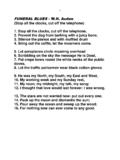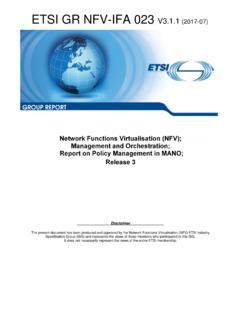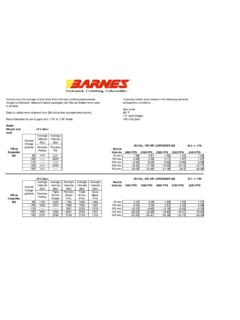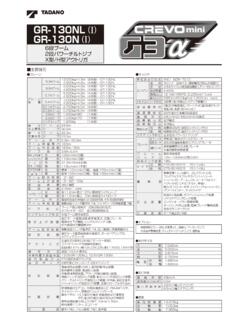Transcription of 2017 EGD PAT - Gr 12 - Eng - Hoërskool Overkruin
1 Copyright reserved Please turn over 333 ENGINEERING GRAPHICS AND DESIGN GUIDELINES FOR PRACTICAL ASSESSMENT TASKS 2017 These guidelines consist of 27 Graphics and Design2 DBE/PAT 2017 NSC Copyright reserved Please turn over TABLE OF CONTENTS 1. Introduction 3 SECTION A (TEACHER GUIDELINES) 3 2. The structure of the practical assessment task (PAT) for EGD 3 Elements that make up the PAT mark for Engineering Graphics and Design 5 3. Administration of the PAT 5 4. Assessment and moderation of the PAT 6 Assessment 6 Moderation 6 Declaration of authenticity 7 5.
2 Conclusion 7 SECTION B (LEARNER TASKS) 8 6. Practical assessment task 1 (PAT 1) A civil design project 8 7. Practical assessment task 2 (PAT 2) A mechanical design project 16 8. ANNEXURE A: Rubric for assessing drawing methods, skills and presentation 24 9. A simplified rubric for the allocation and verification of marks 25 10. Practical assessment task 2017: Summative assessment sheet 26 11. Declaration of authenticity 27 Engineering Graphics and Design3 DBE/PAT 2017 NSC Copyright reserved Please turn over 1. INTRODUCTION The 16 Curriculum and Assessment Policy Statement subjects which contain a practical component all include a practical assessment task (PAT).
3 These subjects are: AGRICULTURE: Agricultural Management Practices, Agricultural Technology ARTS: Dance Studies, Design, Dramatic Arts, Music, Visual Arts SCIENCES: Computer Applications Technology, Information Technology SERVICES: Consumer Studies, Hospitality Studies, Tourism TECHNOLOGY:Civil Technology, Electrical Technology, Mechanical Technology and Engineering Graphics and Design A practical assessment task (PAT) mark is a compulsory component of the final promotion mark for all candidates offering subjects that have a practical component and counts 25% (100 marks) of the end-of-year examination mark.
4 The PAT is implemented across the first three terms of the school year. This is broken down into different phases or a series of smaller activities that make up the PAT. The PAT allows for learners to be assessed on a regular basis during the school year and it also allows for the assessment of skills that cannot be assessed in a written format, test or examination. It is therefore important that schools ensure that all learners complete the practical assessment tasks within the stipulated period to ensure that learners are resulted at the end of the school year. The planning and execution of the PAT differs from subject to subject. SECTION A (TEACHER GUIDELINES) 2. THE STRUCTURE OF THE PRACTICAL ASSESSMENT TASK (PAT) FOR EGD As the Engineering Graphics and Design (EGD) PAT is a compulsory national formal assessment task that contributes 25% ( 100 marks) towards a learner's final NSC mark, it is essentially the third NSC examination paper of EGD.
5 All the presentation requirements must therefore be adhered to and, with the exception of the required research, completed at school, under the supervision of the EGD teacher. Each learner must complete the PAT individually and ALL the presentations must be his/her own original work. The primary purpose of the EGD PAT is to assess four subjective content and concept topics which are not assessed in the examination papers. These are: The design process The application of drawing knowledge and drawing skills to the design process CAD management and drawings The quality and neatness of free-hand, instrument and CAD drawings The EGD PAT is therefore designed to develop a learner's ability to integrate and apply knowledge and to demonstrate acquired levels of skills and competency.
6 With the inclusion of the PAT into EGD, the learner is given an opportunity to apply Engineering Graphics and Design4 DBE/PAT 2017 NSC Copyright reserved Please turn over acquired knowledge, skills and values in a creative way through the design process. The learner is given an opportunity to complete the PAT in an environment which is more conducive to the creative processes. This environment should therefore provide the learner with easier access to, and a wider variety of, resource material than would be available in a formal examination. The various components of the EGD PAT gives the learner an opportunity to demonstrate the level of drawing skill that has been attained in all the appropriate drawing methods through the presentation of the required drawings.
7 Each EGD PAT consists of TWO parts: Part A: The design process Part B: Required working and pictorial drawings Part A of both PATs requires that the learner demonstrates a clear understanding of, and is able to apply, the design process. As part of the design process, the learner must be able to do the following: Identify the problem(s) and formulate a design brief with specifications and constraints Conduct and use relevant external research in an appropriate way Generate a number of own ideas/concepts/solutions analytically and graphically through comprehensive freehand drawings Select a final solution(s) that demonstrates a clear understanding of the design brief Present the final solution(s)
8 As working drawings and pictorial drawings Provide clear evidence of continuous self-evaluation during the development of the PAT Part B of both PATs requires that the learner demonstrates and provides evidence of a high level of knowledge and understanding of the concepts and content of Engineering Graphics and Design through the presentation of orthographic drawings and pictorial drawings. Part A and Part B of both PATs also give the learner the opportunity to demonstrate that a high level of competency and skill has been attained in the following required EGD drawing methods: Freehand drawings prepared in pencil Instrument drawings prepared in pencil Using a CAD (Computer-aided Drawing/Design) system TWO practical assessment tasks (PATs) are included in this document: PAT 1 is a design task in the context of civil technology PAT 2 is a design task in the context of mechanical technology Each learner must, with the guidance of the teacher, select ONE of the PATs contained in this document.
9 Engineering Graphics and Design5 DBE/PAT 2017 NSC Copyright reserved Please turn over Elements that make up the PAT mark for Engineering Graphics and Design ELEMENTS OF THE MARK FOR THE PRACTICAL ASSESSMENT TASKELEMENTMARKThe design process25 The correctnessof the working and pictorial drawings50 The drawing methods(freehand, instrument and CAD)25 TOTAL1003. ADMINISTRATION OF THE PAT At the beginning of the academic year the EGD teacher must ensure that every Grade 12 learner receives a copy of the entire SECTION B of the PAT document, ALL the pages from page 8 to page 27. The completed phases of ALL the PATs must be submitted in time for summative assessment to be done before the commencement of phase moderation in the second and third terms and provincial moderation in the third term.
10 The PATs must therefore be completed in the following phases during the first three terms: Phase 1: Design process (completed by the end of the 1stterm)Phase 2:Presentation drawings (completed by the end of the 2nd term) Phase 3: Completion of portfolio (before the commencement of provincial/ final moderation in the 3rd termor at the latest beforethe commencement of the preparatory examinations) Although the phases could be done either CYCLICALLY or in BLOCK TIMES, as indicated in the EGD CAPS, it is recommended that ONE ENTIRE DAY per term, as an extra paper during the June examinations, be allocated for each phase. The teaching/period time that may be allocated for the completion of all three phases of the PAT is 12 hours to a maximum of 16 hours.










